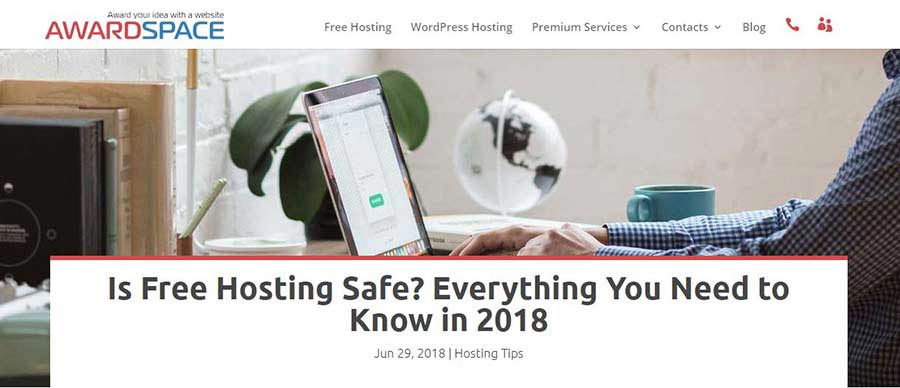Creativity is an amazing thing to master. You can create beautiful content in your blog posts, you can be interesting to your audience and you can even inspire others with the way you say things. But the muse is not always around, is it? And when it’s missing you might need a little push to present.
Truth is, creativity must come from somewhere. Basic knowledge and proficiency give a good start for you to get to the extraordinary point in your blog posts. That is why I collected 5 templates you can use to write nice blog posts.
Templates? For a blog? Yes, I know. Blogs are personal and the content should be passionate, has to come from your heart, and be about your experience. The templates I’m talking about are actually ideas you can use for the thoughts you have. They just help to present it.
No more staling, here they are.
1. Numbered Blog Posts
Lists, lists, and more lists.
To be honest, those blog posts are both loved and hated. There are 5 ways to make sure you don’t use too much listing and 6 ways to reduce it if you have. Just kidding. You actually need to be very careful when you write these blog posts.
First of all, think of a theme that is interesting and is going to be useful to your readers. Then, make sure to overview the problem or your idea.
Describe why you chose it, and why you think it’s going to be useful. Don’t just share said things in order.
Here are some examples:
- X things you didn’t know about
- X tips for something
- X facts you should know
- X ways to do or prevent something
The number of facts, ways, or tips should not be too much but of course not just a few. The right amount of it is from 5 to 15. They should be surrounded by an introduction and finalization, both filled with your personal thoughts. As well as that, the points you are reciting have to be also well explained and filled with important text.
Another example of an article like this is How to Be a Copywriter: The Only 5 Rules for Success and it also might be interesting for you!
2. The Favorite “How–to” Blog Posts
Well, this one is treasured by everyone. Who doesn’t love to search for “How to”? We have so many questions. Every day, every minute. Google has become our best friend when it comes to how to. How to create something, how to start, how to do it, how to understand it, how to fix another thing, and then how to enjoy it even.
How to Overcome Writer’s Block – I believe this will be very useful for you too. Not only is it a “How-to” article, but it can help your block!
Now, how to make your blog posts interesting? Use Google Analytics, maybe another tool, or just ask people what they really need to know. Find out what is important to them and what they would like to learn. Answering those questions will help you write an amazing how-to blog post.
3. Frequently Asked Questions – Answer!
FAQ pages on websites are one really important and helpful thing. When you are blogging though, there is a small chance you can include that. So, here is a better way to be helpful to your readers. Pick a question and answer it.
It sounds pretty much like the how-to blog posts, but answering the FAQ might include questions that do not expect a guide. More often they are about reasons, explanations, and advice. Just like the example I gave you, answering a question like that is of great importance.
You can join Facebook groups, follow pages and make assumptions through your research about what is not clear to your followers. Create a poll on Instagram. Post a tweet. They will be all happy to ask you and it will turn into a great article for your blog.
For example, some people are asking us why nobody is reading their block. That’s why we wrote an article for it and helped some of our web hosting users. Check it out! “Nobody Reads My Blog” 5 Working Strategies to Change This.
4. Share Resources and Tools
The article above is a great example of how one of those should look. To be fairly honest, these blog posts are not so easy to write and they require your research and collection of data. But once completed and provided all the information, it will be useful for you too!
On the one hand, sharing resources in these blog posts can be confusing. You’d better be careful when choosing them because not every resource is reliable, suitable, or trustworthy. Look around, and find some important websites that have your information. You can link to Wikipedia, Amazon, YouTube, or Social Media channels.
On the other hand, tools are always a great idea and easier to find. When you decide what tools exactly are you going to collect and share, finding information about them is not that much work. Furthermore, you can share useful tips about them, follow-up posts about how to use them, or any other idea that pops up.
5. Quote Someone, Give Example, and Use Influencers
Looking around blogs and learning about trending topics and ways of writing, I came up with these particular blog posts. They can be actually presented in different ways, but the point is always the same. Look up to somebody and find your inspiration there.
So, what it actually is? There are people in our history or present time that have a huge effect on us. We follow them, and their beliefs, and they change our perspective. Sometimes it’s about things they said that turned into powerful quotes. Other times, it’s about the way they do it.
No further ado, here is what I mean. These blog posts can be:
- X food/travel/lifestyle blogs you need to follow
- X inspirational quotes from (the quoted person here) you absolutely need to read
- X websites with amazing designs
- X experts, you can follow for knowledge growth
Final Thoughts
I told you, you need a conclusion. It helps get the point of the whole post summed up at the end. It’s the final step in convincing your readers that what they read in those few steps is what they can really use. I’m not saying you must use all of those examples, but I sincerely hope they are useful for you.
Try to get an idea from them, maybe start with one of the templates, you’ll find yourself on the way to creating useful and actually interesting content for the ones that chose to follow your blog.
Good luck and don’t forget to share your posts in the comments below. Tell us how you do it.
And if you haven’t started a blog already, this article is just for you! – “What Should My Blog Be About?” 5 Ways to Decide!





